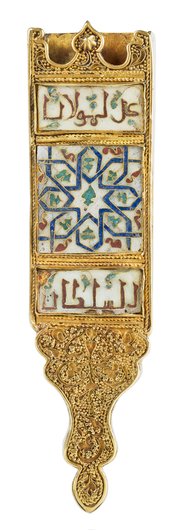
1300 - 1399
Museum of Islamic Art
The inclusion of raised orange-red pigments (a color often compared to sealing wax) confidently dates this dish to the 970s AH/1570s CE when this color was first invented. The Iznik potter who created this dish was clever in his approach to the composition, depicting four of the carnations with broken stems that sweep back towards the centre, filling out the circular space. Overall, the design is dynamic yet natural with its red carnations and green stems contrasting beautifully against the clear glaze and even white ground. Floral motifs such as this were popular in 10th century AH/16th century CE Ottoman Turkey and used to decorate a variety of Iznik dishes produced under the Imperial workshop.